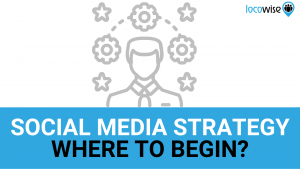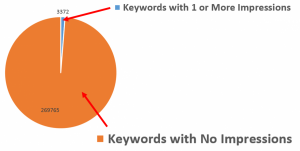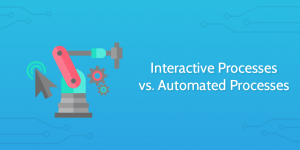Robots aren’t taking over marketing quite yet. But columnist Joe Hyland says if you want to save your job from AI, you need to make a human connection and climb up the marketing ladder.

When two of the world’s leading AI research firms, Google DeepMind and Open AI, team up to research the “safety challenges” of artificial intelligence, you know the threat is real. While we may not have a sentient Skynet in the next decade, the greatest risk AI poses today is to your job.
Fear of replacement by robots has been a reality for workers in manufacturing for decades, but due to advancements in artificial intelligence, computers are now capable of automating many fundamental “white collar” professions.
In fact, just this year, a Japanese insurance company replaced 34 employees with IBM’s Watson. More recently, a programmer sparked a viral discussion across internet forums over the ethics on automating himself out of his own job.
And that’s only the beginning. An Oxford research study predicts up to 47 percent of US jobs (PDF) will be automated in the next decade. However, there are fields in which automation is unlikely, according to the same researchers.
Jobs like surgeons and lawyers have a 0.42 percent and 3.5 percent chance of automation, respectively. Slim odds compared to accountants’ 94 percent chance. Interestingly, marketing managers, too, appear safe from the oncoming wave of automation, scoring only a 1.4 percent.
What’s saving marketers from automation? Human connection.
A great marketing campaign requires an even greater connection with customers; that’s something only humans are capable of.
That said, refuge from the oncoming robot revolution is no reason to rest. The same breakthroughs in programming that will take jobs from white-collar workers will radically change marketing as well.
Now, more than ever, the role of the marketer is to be both a technologist — an expert in automated technology — and, perhaps more importantly, to be human — to actively connect and empathize with customers at every point of engagement. Otherwise, it’s time to get friendly with our robot overlords.
Software will eat the bottom of the marketing ladder, so get ready to climb
Today, hundreds of marketing automation solutions are already tackling many basic marketing activities, from email blasts to real-time ad purchasing, giving marketers unprecedented reach. Any marketer with an internet connection can now reach millions of prospects across the world with the push of a button.
But our reliance on automated programs has resulted in an industry focused on metrics that don’t move the bottom line — vanity metrics like clicks and views.
Truthfully, it’s impossible to say we as marketers understand a customer’s desires because he or she viewed a video or downloaded a white paper. Metrics as accessible as clicks and views quickly lose their integrity when anyone with a clicking mouse suddenly becomes an engaged prospect. Bloated metrics don’t help customers or marketers.
It’s no secret that the best leads come from in-person meetings. Instead of automating every minutia of your marketing campaign, move up the ladder. Let software handle those basic marketing activities, and place more emphasis on fostering customer relationships.
Seek out the digital marketing solutions that marry automation and human connection — those are the solutions that build pipeline and revenue.
Humans and computers can find common ground
Interpersonal skills like empathy, communication and listening will become fundamental for marketers in the future. No computer, no matter how advanced, can replace an empathetic ear. Consequently, there’s a great deal of opportunity in finding synergies between the respective skill sets of intelligent programs and marketers.
Consider H&R Block’s partnership announcement with IBM Watson. H&R Block could have heralded Watson as the end to human tax professionals, letting the computers do all the work faster and more expertly. But who wants to take part in a future where humans are obsolete?
Instead, to its benefit, H&R Block positioned Watson as a tool to further elevate services its reps already provide to customers. It was not about replacement, rather letting computers and humans do what they do best, together.
In that same regard, there’s tremendous value in freeing up a marketing team’s time by using automated programs to tackle more tedious activities. Marketers will be free to hone their craft, learn from the customer and apply their knowledge and experiences in new, exciting ways. Just imagine the possibilities if you could rid yourself of the monotonous tasks marketers find themselves often doing.
I have no doubt that marketers will maintain their relevance long into the future. The key is to understand customers on a human level, not as a data point in a sea of entries. No software will tell you how best to navigate the intricacies of a customer relationship — for that you need human intuition.
Let automated programs handle the time-consuming tasks and instead focus on what lies ahead. In essence, care about your customer relationships, and no robot will ever replace you.
Some opinions expressed in this article may be those of a guest author and not necessarily Marketing Land. Staff authors are listed here.
Marketing Land – Internet Marketing News, Strategies & Tips
(81)
Report Post






